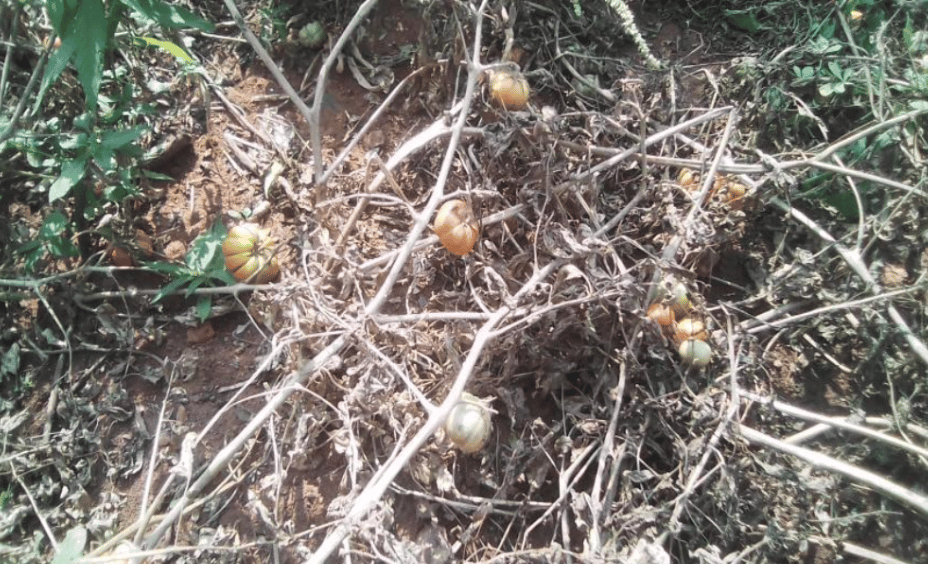
The agricultural sector is particularly affected by climate change. It is important to find solutions to climate-related challenges. The challenges are many: desertification, land degradation, drought, floods, and water scarcity. All countries in the world are practically exposed to these climate hazards. Togo is no exception.
The situation in the south of Togo in Lomé has been a bit strange since 2008. The south is the rainiest part of Togo. In the past, rains were regular and food crops were produced twice a year. The most common crops grown were maize, cassava, rice, spices, tomatoes, and other legumes. These agricultural products were successful and the farmers of Lomé made them their source of income.
In recent years, the lack of rain has negatively impacted the efforts of farmers. Why the interest in the agricultural field to carry out my advocacy on losses and damages?
I am an environmental sociologist, the son of a farmer, and I started a coffee plantation when I was still a student. In the first years of the plantation in 1998, the soils were rich and the production was very good. But with the irregularity of the rains, the clay soils become very hard. The flowers of the coffee trees do not bloom, they become yellowish instead of white. Production yields drop and the farmers no longer have enough income to meet their most basic needs.
Knowing perfectly well these realities that the farmers are going through, I choose to defend their cause on a problem over which they have no power: the anticipated drought or lack of rain-induced by climate change. Naturally, southern Togo has two seasons: the long agricultural season from March to mid-June and the short one from mid-September to the end of October. But for some years now, a major disturbance has been noted in this climate cycle, putting the farmers' efforts to the test. The observation is shared by other researchers. For example, the Open edition Journal stated:
The development [of the agricultural sector] could be severely handicapped by climate change, which will alter rainfall patterns and increase the frequency and intensity of extreme weather events. Also, Togo's Second National Communication on Climate Change (MERF, 2010) projects "estimated losses of between 5 and 10% of maize and rice production by 2025 and 2100, compared to average production from 2007 to 2009. In monetary terms, these losses are worth between 6.16 and 87.6 billion CFA francs for maize and 1.4 to 58.5 billion CFA francs for rice for the same period'.
It was no longer just a certain prediction. In 2018, I made a video about the adverse effects of climate change on agriculture in southern Togo. This year, the rain was interrupted and the second agricultural season did not take place. All the efforts of small-scale farmers in urban and semi-urban areas in southern Togo have washed away. As noted above, since 2008, there have hardly been two rainy seasons in southern Togo. During these periods when there should be rain, there are often strong dusty winds.
We have no more pictures to share with our readers in this text. But an outing on Sunday, August 21, 2022, to a farmer's field in a suburb of Lomé allowed us to take a few photos that should make us think and call on all those of goodwill to act so that agricultural losses and damages are taken into account in planning. The losses and damages correspond to the local impacts of climate change.
As you can see, we are in the middle of the agricultural season. But the cultivation of these tomatoes has not been successful due to a lack of rain. The rain has suddenly stopped. With the lack of rain, the tomato leaves are subject to an invasion of parasites (such as mildew, powdery mildew, chlorosis, or Botrytis) which end up drying out. The tomato plants end up being sun-scorched and become dry and brittle. This is what the pictures show.

We believe that enough is enough and that the farmer should no longer bear the costs alone. The lives and livelihoods of hundreds of millions of people, their cultures, development progress, and economic prosperity are at risk.
Efforts to reduce and manage the risks of loss and damage must therefore consider measures that address all three components of climate risk. Specifically, they should aim to:
Faced with these situations, which affect the survival of millions of people, we cannot remain indifferent. We demand that justice be done. Even if agricultural activity contributes to the emission of greenhouse gases responsible for climate change, small-scale producers are only responsible for a small proportion of it and must not pay the price they are currently suffering. This is our fight with Loss and Damage Youth Coalition (LDYC). We are sending this message to the world's leaders and we want our cry to be heard at COP27.